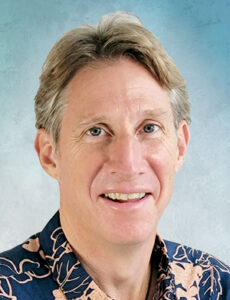
Matthew Scanlon
After three years, O‘ahu can still boast the deepest and largest known column foundation in the world. Shimmick/Traylor/Granite Joint Venture was contracted by the Honolulu Authority for Rapid Transportation to build Skyline’s airport guideway and stations segment, which includes a record-breaking achievement along Kalihi Stream on Kamehameha Highway between Middle Street and Pu‘uhale Road.
Known as a drilled-shaft caisson, the foundation rests at a depth of 357 feet, measures 10 feet in diameter and serves as a support base for the Kahauiki Station in Kalihi. The mechanical marvel was achieved by STG’s use of steel casing edged with cutting teeth that’s twisted into the ground using an oscillated casing rotator manufactured by Korea-based BUMA Construction Equipment Co. Ltd.
To determine depth measurements, nylon-coated fiberglass measuring tape is lowered from an established survey point, with the depth verified by use of a shaft indicator device. Dimensions are determined by measuring the vertical and lateral loads resisted by the column, as well as the column’s end-bearing strength, side-friction and soil stiffness.
According to HART Director of Design & Construction Project Engineer Matthew Scanlon, soil is excavated from inside the steel casing before the shaft is inspected using the SID. When it’s time for the concrete pour, a reinforced steel cage is first lowered inside the casing.
“Then the concrete is poured continually at a controlled rate with staging of concrete delivery until all the concrete is placed,” explains Scanlon. “The shaft required approximately 900 cubic yards of concrete.”
The concrete is poured carefully, starting from the bottom of the shaft until it reaches the desired height. The process displaces water in the shaft via the tremie method, a technique used for setting concrete below water. According to civicconcepts.com, once the concrete is placed, the tremie pipe is gradually lifted out, maintaining sufficient depth to prevent water or other debris from contaminating the placed concrete.
“The curing of concrete is slower in wet conditions than in dry. This shaft is below the water table, preventing evaporation, and is the contributing factor in reducing the curing rate rather than depth,” says Scanlon. “Concrete samples are ‘wet cured’ to mimic on-site conditions to ensure the concrete placed reaches required strength.”




